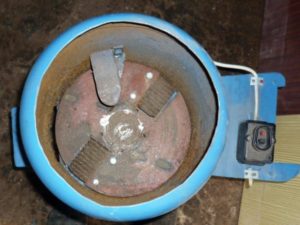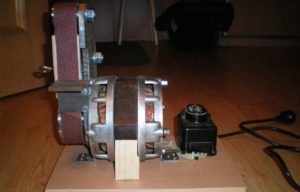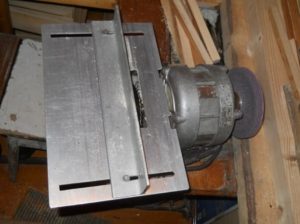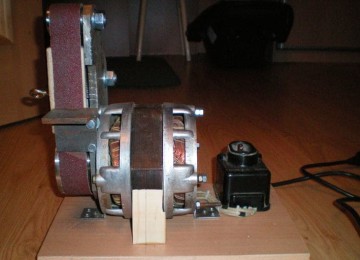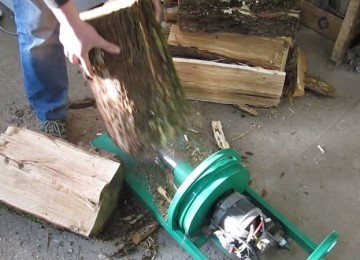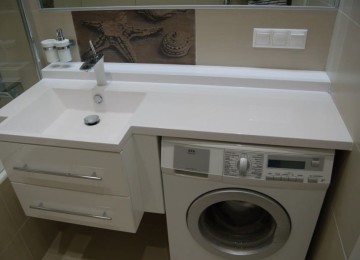 Not all people know that instead of buying a barbecue for cooking meat, vegetables and other products, you can make it yourself from the drum of a washing machine, ordinary improvised means and materials. Such a barbecue will cost free, you can make it quickly, and in terms of quality it will not be inferior to a product from a store and will last much longer.
Not all people know that instead of buying a barbecue for cooking meat, vegetables and other products, you can make it yourself from the drum of a washing machine, ordinary improvised means and materials. Such a barbecue will cost free, you can make it quickly, and in terms of quality it will not be inferior to a product from a store and will last much longer.
Features and Benefits
The drum of the automatic washing machine is made of stainless steel and therefore is not subject to corrosion. If you make a grill , smokehouse And even a juicer from a washing machine drum, it can not only withstand high temperatures, but is also durable, lightweight, compact and safe, as it does not contain sharp edges.
In addition, due to the fact that the drum is made as a result of perforation, it is distinguished by the correct shape of the holes and their symmetrical arrangement on the walls and bottom. Due to this, meats and vegetables will fry or bake much faster as air will flow through these holes, helping to fan the coals.
Types of barbecues
Before you start making a brazier, it is recommended that you familiarize yourself with what types and models of braziers exist.
According to the material of manufacture, barbecues are of the following types:
- block;
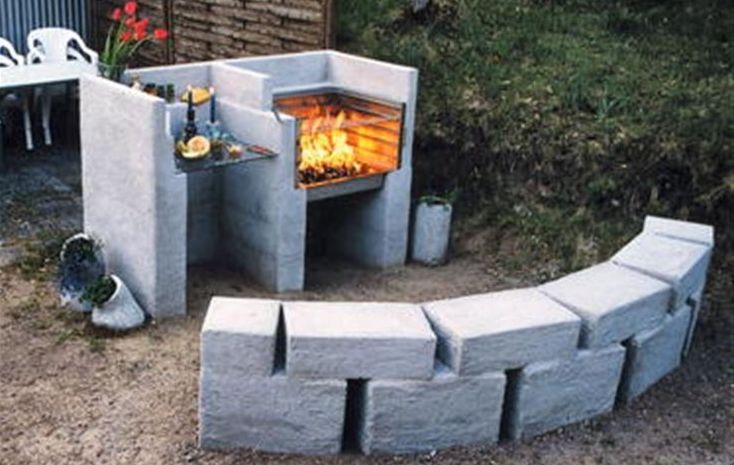
- metal;
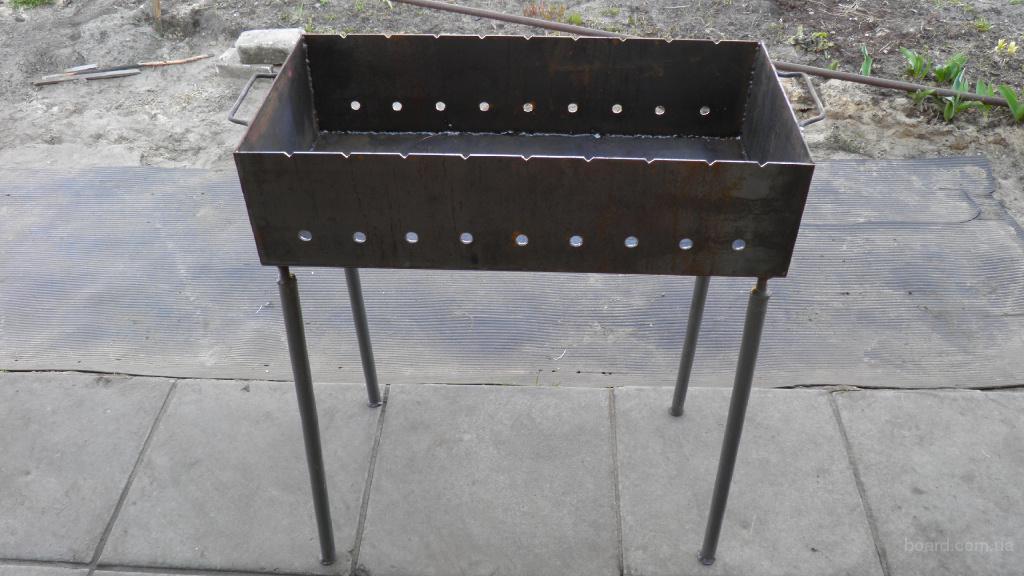
- stone;
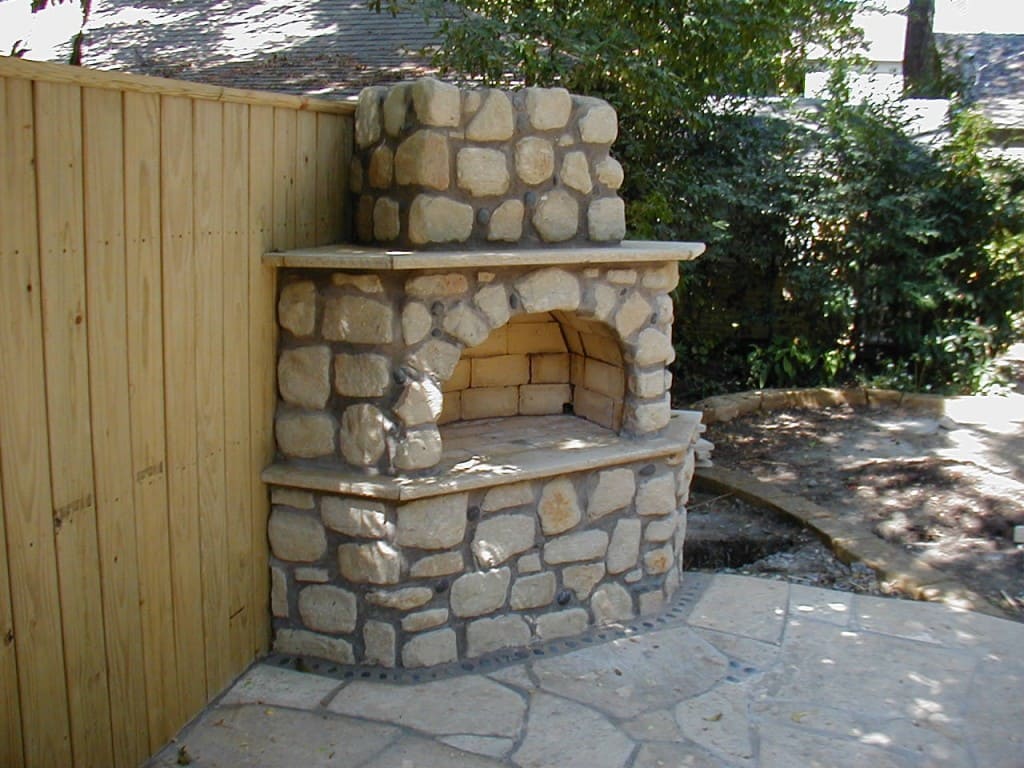
- brick.
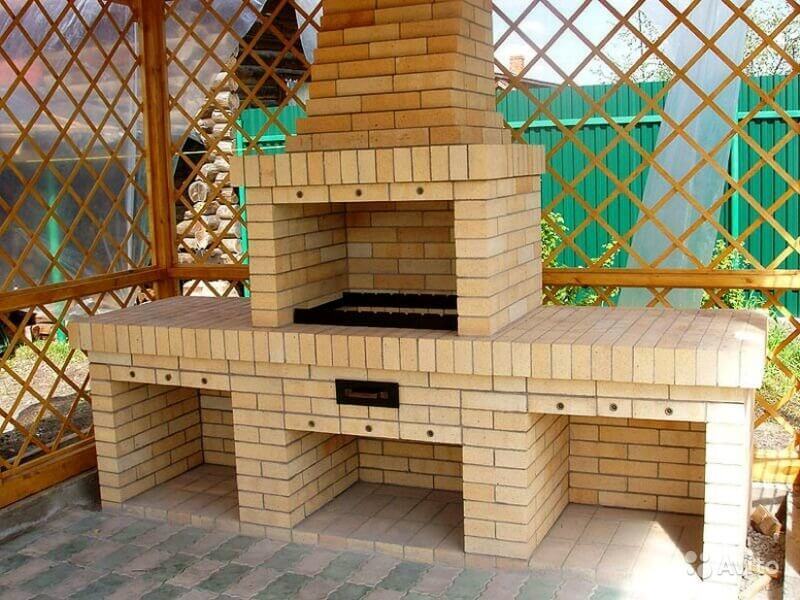
Most often, profiles, steel sheets and concrete blocks are used to create barbecues.
According to the structure and possibility of movement, the following types of barbecues are distinguished:
- stationary;

- portable;
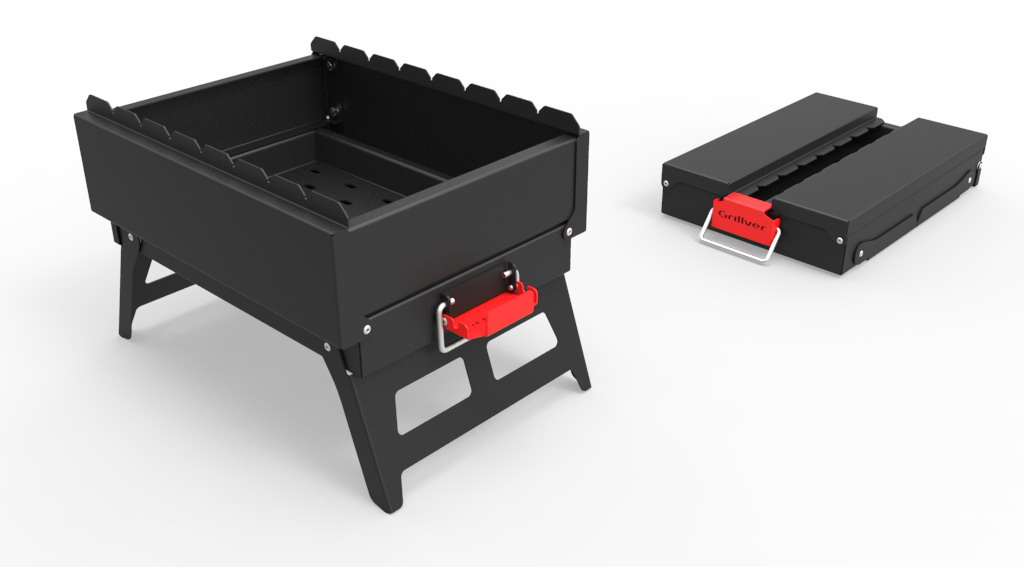
- mobile.

A stationary barbecue requires a separate designated place on the site. It is a rather massive structure, which must be installed on a rigid base. Under the influence of external factors, this type of barbecue is subject to rapid destruction.
A portable model is considered to be more durable in its operation due to the fact that it is used as needed, and it is also compact and can be disassembled. Among the disadvantages, one can note the simplified design, due to which, not all dishes can be cooked on such equipment.
Recommendations for self-manufacturing of a brazier
So, how to make a barbecue yourself? First of all, you need to prepare the inventory that will be needed in the process. To create a barbecue, you will need the following elements:
tape measure;
- hacksaw;
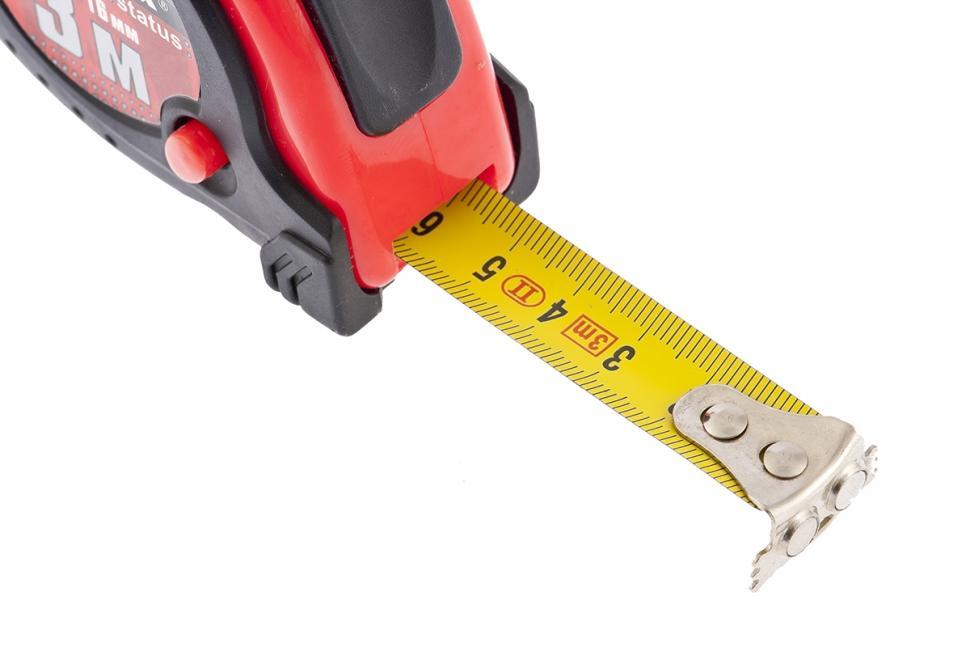
- drill;

- pliers;
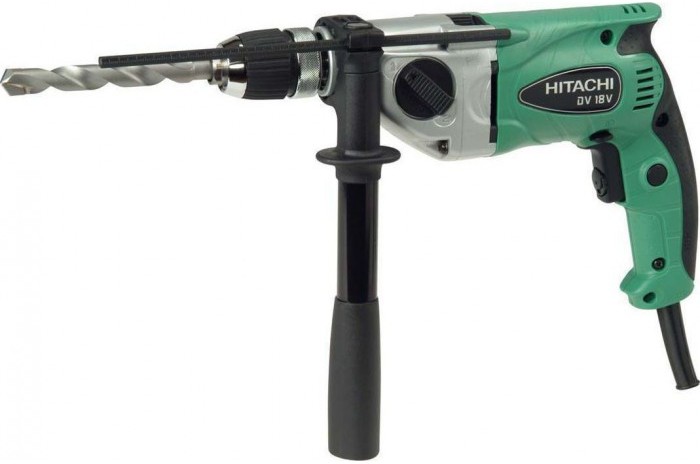
- grinder;
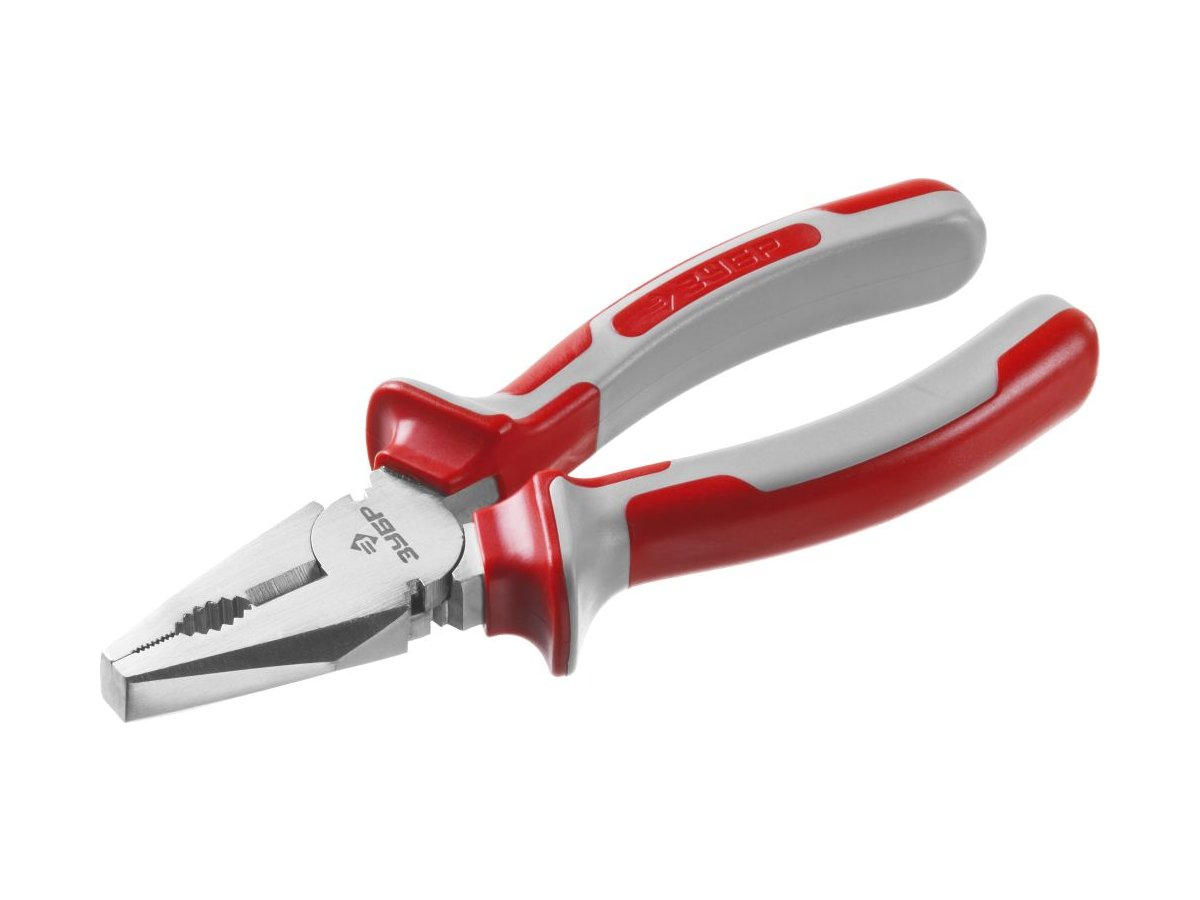
- marker;
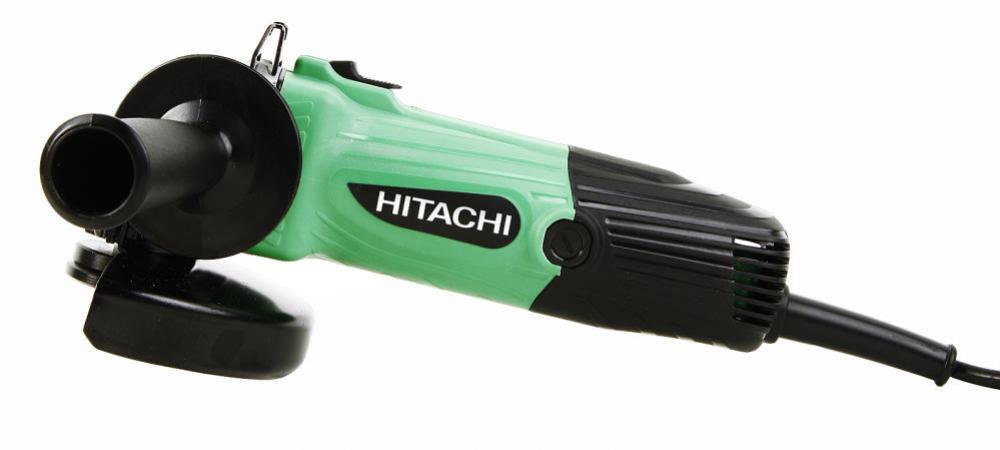
- flat file.
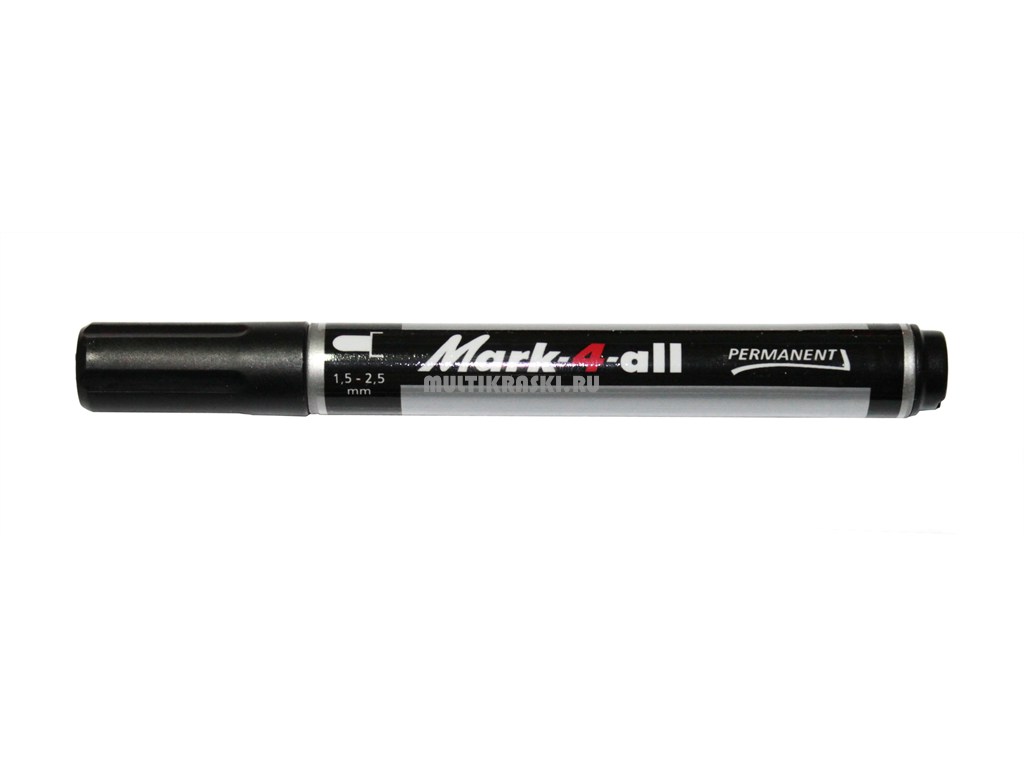
- The drum from an automatic washing machine will serve as the body. If it is deep, it is recommended for further convenience to saw it into two halves using a grinder. One sawn part can be inserted into the other and welded, thus increasing the reliability of the brazier. A shallow and small drum does not need to be sawed.
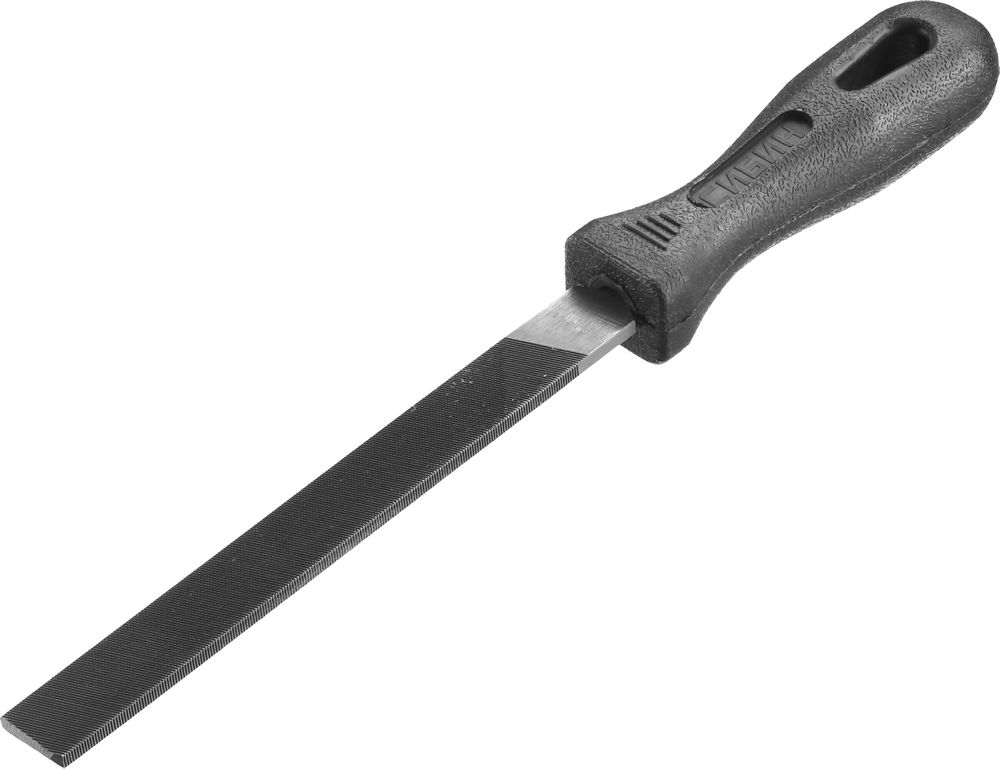
The next step is to place the body of the future barbecue vertically
using a marker, mark a rectangular hole in the center.According to the material of manufacture, barbecues come in the following types:,block;
metal;
stone;
brick.
Most often, profiles, steel sheets and concrete blocks are used to create barbecues.
- Based on their structure and ability to move, the following types of barbecues are distinguished:
- stationary;
- portable;
- mobile.
For a stationary barbecue you need a separate allocated place on the site. It is a rather massive structure that must be installed on a rigid base. Under the influence of external factors, this type of barbecue is subject to rapid destruction.
The portable model is considered longer in its operation due to the fact that it is used as needed, and it is also compact and can be disassembled. Among the disadvantages, one can note the simplified design, and therefore, not all dishes can be prepared using such equipment.
Recommendations for making your own roaster
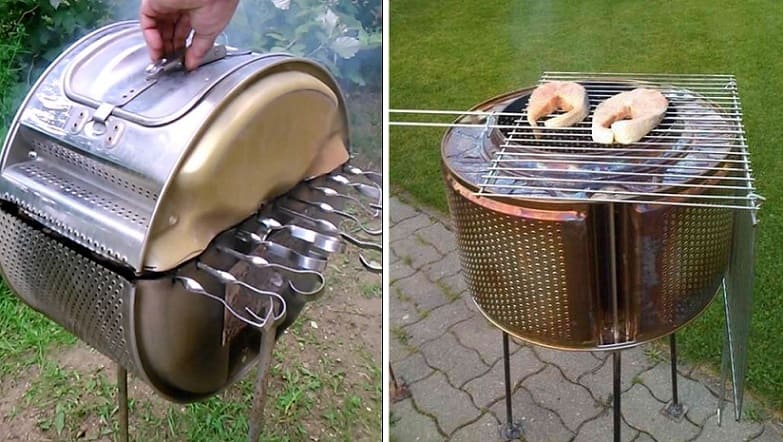
So, how to make a grill yourself? First of all, you need to prepare the inventory that will be needed in the process.
- To create a barbecue you will need the following elements:
- roulette;
- hacksaw for metal;
- drill;
pliers;
Bulgarian;
marker;
- flat file.,

- The drum from the automatic washing machine will serve as the housing. If it is deep, it is recommended for further convenience to cut it into two halves using a grinder. One sawn part can be inserted into another and welded, thus increasing the reliability of the fryer. A shallow and small drum does not need to be sawed.
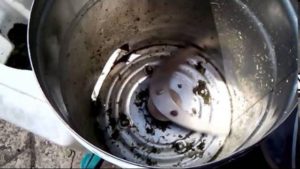
- The next step is to position the body of the future barbecue vertically
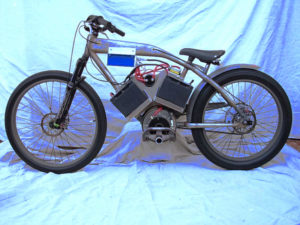
- Using a marker, mark a rectangular hole in the center.It is important that when applying markings, between the corners of the rectangle and the circumference of the drum, there is space left for installing the corners, that is, the stops of the skewers. This must be done in order to make moving and rotating the skewers more convenient, as well as to maintain personal safety and avoid getting burned.
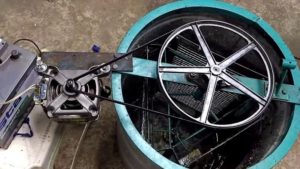
- Using a grinder, cut out a rectangle. Then, along the edges of the rectangle, a hole with a diameter of 10 millimeters is drilled for bolts. The same holes are drilled in the corner, having previously measured it with a tape measure so that it fits the tank in size and, if necessary, use a flat file. The final step is to screw the stops to the tank.
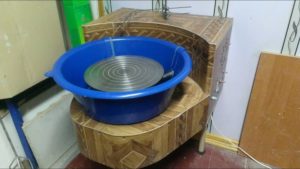
- Methods for installing a Dutch oven stand

- To prevent the barbecue from turning out low and to be more stable, you should additionally build a stand for it from iron pipes, angles or fittings, approximately 3 meters long.
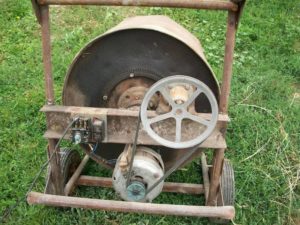
- You can attach them to the drum in the following ways:
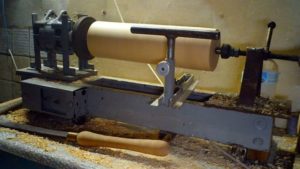
- Using a welding machine or a standard connection using bolts, stands made of the selected material are attached to the side fastenings of the fryer body. When fixed with bolts, they will be removable, which is more convenient for hikers. All legs can be connected to each other using a metal crossbar, this will contribute to the stability of the tank.
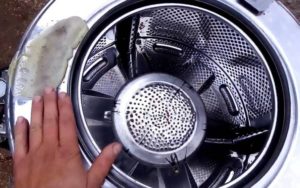
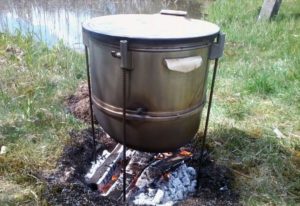
- If you don’t have a welding machine, you can use the following method: 2 holes measuring 6–8 millimeters are marked and drilled on the bends of the legs. The resulting blanks are applied to the bottom of the body, using them as a sample, it is necessary to drill holes in the drum. All parts are connected using bolts of suitable size and length.

- For a do-it-yourself barbecue, a ready-made, unnecessary, but suitable-sized stand made of non-flammable and durable material is also suitable. For example, a metal flower stand. It is attached in a similar way as presented in the second paragraph.

